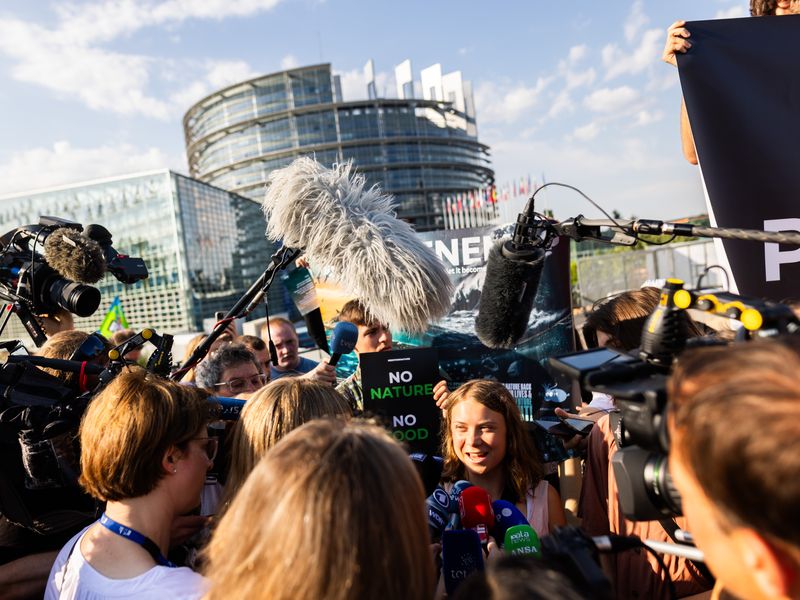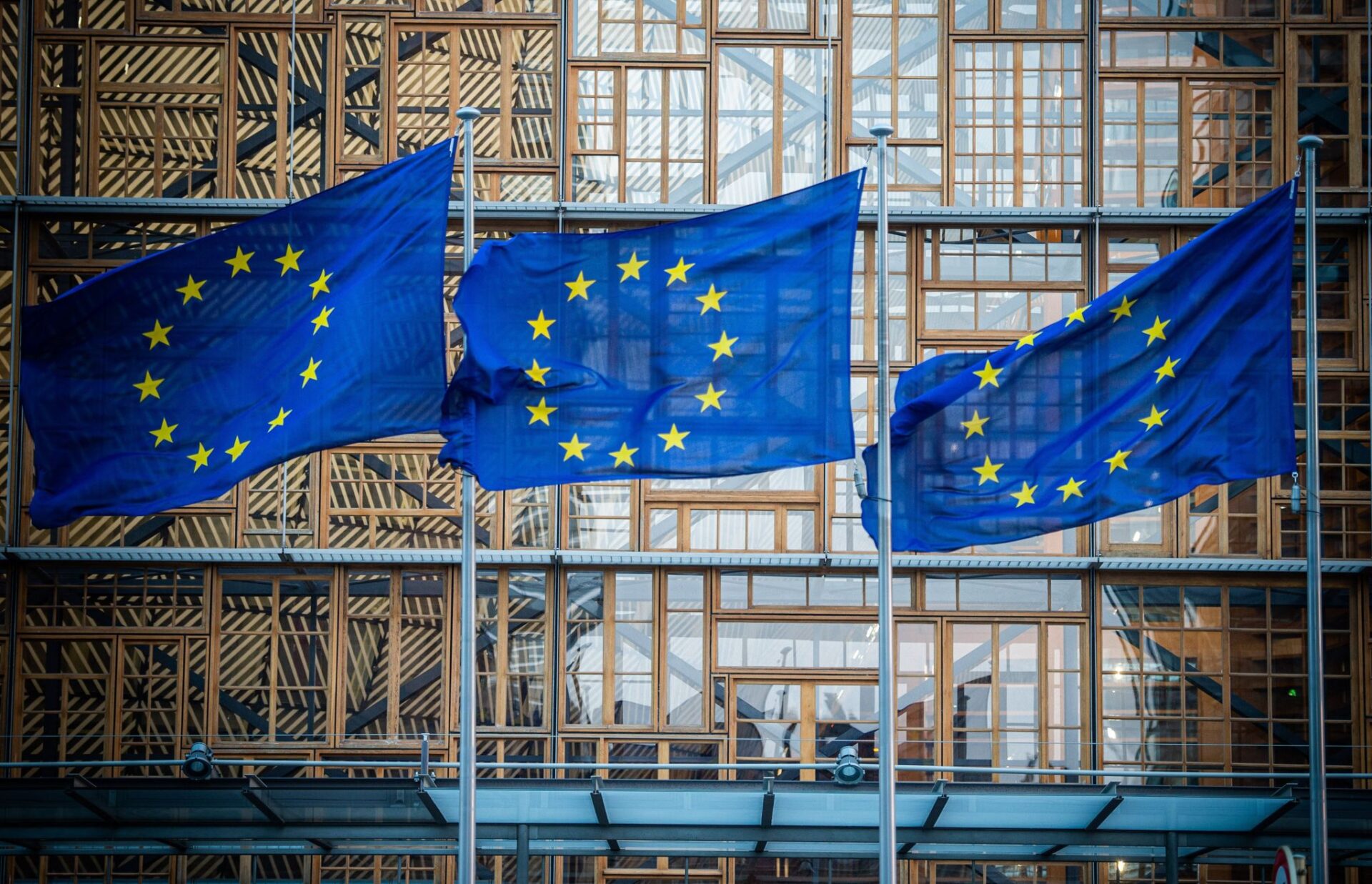The European Media Landscape
News outlets in Europe generally focus on the domestic market when reporting EU issues. This often revolves around the impact of decisions, proposals and debates on the country in question. The attention paid to European issues and the EU is particularly high when the country where the agency is headquartered is in the process of applying for EU membership. The correspondents report mainly from a national perspective and therefore mostly work independently of each other.
Correspondents in Brussels thus act as intermediaries between a European and a national public. In the joint European Newsroom, news agency journalists have the opportunity to collaborate across borders. This also involves the question of how EU coverage from and within Europe can be improved through cooperation.
Europe’s development from a vibrant news continent to provider of medial diversity
The relevance of and need for an enr becomes clear when one examines the European media landscape and the historical development of news agencies on the European continent: In the 20th century, Europe was considered the most vital continent within the global news ecosystem, with internationally operating news agencies. These included Reuters, AFP, dpa, EFE and ANSA, an extensive network of national news agencies and numerous high-class daily newspapers with international audiences and excellent reputations. Europe was the world’s leading news provider in the first half of the century and again after 1980.
Today, this view is outdated in several respects. Firstly, technology has created new ways of producing and distributing news, giving consumers alternative ways of accessing the news that interests them. Secondly, new influential players, such as Facebook, Google and ByteDance, have emerged in the fields of news agencies and news transmission, especially from the USA, the Middle East, Russia and China. Thirdly, social media, in particular, have accelerated the development to the point where everyone is no longer just a recipient of news, but also a distributor. The exclusive gatekeeping function once held by the media has lost its significance.
Agencies are competing with a much greater number of players today than in the 20th century. To survive in the current market, they should reflect on their strengths as news agencies. Important secrets of agency success are journalistic credibility and reliability: Audience trust is of crucial importance for every news agency. Media players only benefit from the services of an agency if they can publish its news without having to check the underlying sources for reliability. Objective, reliable and fact-based information has always been the defining quality characteristic.
News Agencies in the EU Institutions
The size of the so-called Brussels press corps has increased in line with the number of member states and the political influence of the European Union. In 1976, when the European Economic Community had nine member states, only 259 journalists were accredited to the European institutions. The number of journalists accredited by the European Commission peaked in 2018 at 1,031, and as of September 2020, 899 journalists were accredited by the European Commission for the year 2020.
There are several reasons why the number of correspondents has declined recently.
-
- Firstly, newsrooms across Europe – and most correspondents in Brussels are from that continent – have been reducing their staff since the mid-1990s, owing to economic crises and a decline in revenues. Moreover, maintaining an expensive office abroad can put quite a strain on financially weakened media organizations.
- Secondly, the number of foreign correspondents is declining as traditional media outlets are forced to focus on national coverage, thereby devoting less and less time to international news.
- Thirdly, numerous journalists from Central and Eastern Europe who came to Brussels to cover the EU accession of their own countries returned home after the country became a member.
21 percent of all media representatives in Brussels worked for news agencies in 2020
As of September 2020, 189 of the 899 journalists in Brussels, or 21 percent of all media representatives on the ground, worked for news agencies. News agencies from six European countries (the United Kingdom, Germany, France, Belgium, Italy and Spain) clearly dominate this segment, each having more than ten correspondents in Brussels.
In addition to the higher number of journalists in general, the number of media representatives from the Western European countries of the EU working for news agencies (100) is more than four times that of the Eastern European countries (21). It is clear from these figures that Western countries invest more heavily in news agency coverage of the European Union. Hiring reporters to follow what is happening in Brussels is also not a priority for many of the Eastern European countries. As a result, people in these nations have access to only a minimum of news sources and perspectives on EU affairs.
It is noticeable that journalists from small, new EU member states sometimes tend to rely on the official information they receive from their own diplomatic representatives. They have limited access to sources within the European institutions. These smaller member states sometimes do not have the financial resources to permit their correspondents to live and work in comparatively expensive cities like Brussels or Strasbourg. Therefore, they are forced to rely on freelance correspondents in Brussels or to do without reporters on site altogether.
The European Newsroom wants to foster cooperation between European news agencies
The enr wants to counter these tendencies: Through the cooperation project of a newsroom with a joint technical infrastructure and a collective network, the journalistic power in Brussels and thus the diversity of European agency reporting will be strengthened. Smaller agencies, which otherwise cannot afford their own correspondents in Brussels, will have easier access to EU and European coverage. By permitting different perspectives on Europe to coexist, the enr can also help to improve the journalistic quality of reporting. This means the participating news agencies can all benefit from the mutual exchange.
Source: The text is based on the chapter on European news agencies from the preparatory feasibility study on the enr. cf. Jääskeläinen, A. (2020): European news agencies. In: dpa Deutsche Presse-Agentur GmbH (2020): A home for Europe’s agencies. Feasibility study on the establishment of a Joint Newsroom of European News Agencies in Brussels. Hamburg.
Download the German and English versions of the study here.
Media Landscapes of Participating Agencies
The European Newsroom (enr) is a cooperation project between news agencies from all over Europe. Hover across the map to see which agencies are participating, please click to learn about the individual agencies and their wire services.
For more information about the media landscapes of enr partner agencies, please click on the country flags below. You will get an insight into the country’s media structure, the agency participating in the enr, media usage, trust in media and the state of press freedom.

Albania
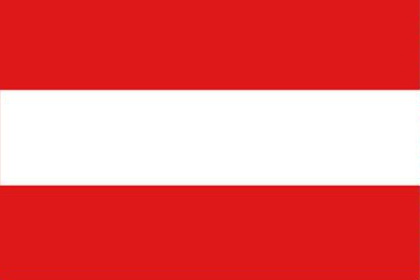
Austria
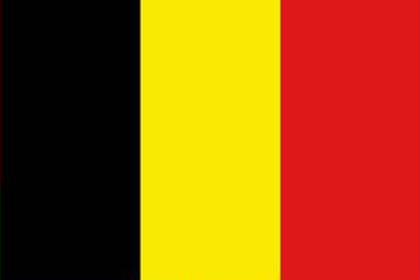
Belgium
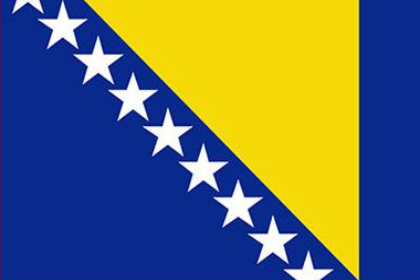
Bosnia and Herzegovina
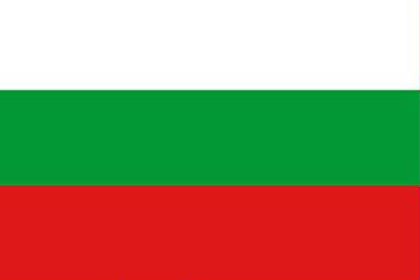
Bulgaria
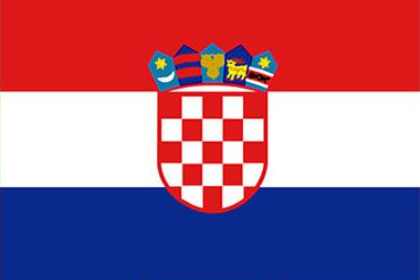
Croatia

France
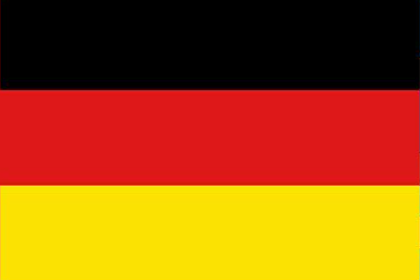
Germany
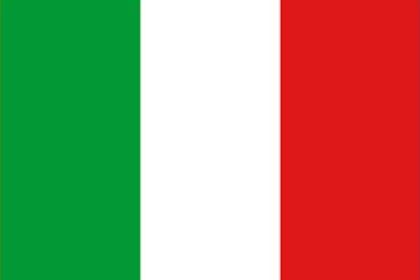
Italy

North Macedonia
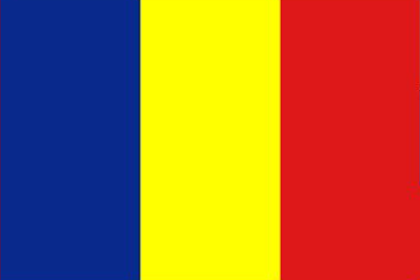
Romania

Serbia
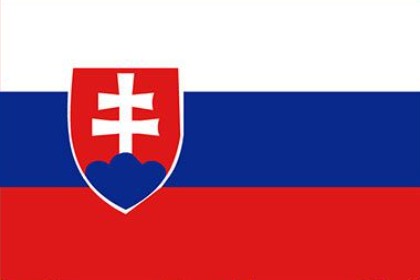
Slovakia
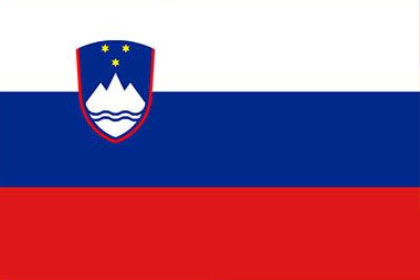
Slovenia
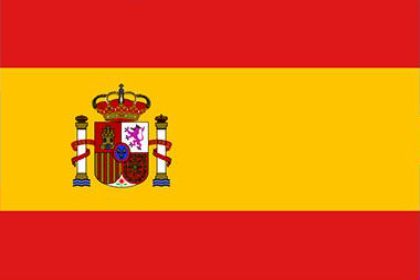
Spain

Albania
Media Structure
In Albania, TV is the most popular medium. However, the internet is on the rise as well, the BBC reports. Dominant media include public broadcaster Albanian Radio and TV (RTSH), as well as the private ones Top Channel, Klan and RTV Ora. Alongside RTSH, there are two private radio stations: Top Albania Radio and Club FM.
The Albanian press is dominated by the privately owned dailies Shekulli, Gazeta Shqiptare, Panorama, Gazeta Dita and Gazeta Mapo. An English-language weekly newspaper, the Tirana Times, is also published.
Albania has one news agency, Albanian Telegraphic Agency (ATA). Online news is provided by the news websites BalkanWeb and NOA and the English-language news site Albanian Daily News. There are hundreds of other online media in the country, but only a small minority has a sustainable business model with transparent funding.
The Albanian media market is largely concentrated in the hands of a mere handful of companies. Public funding constitutes a major part of media revenue.
The most influential Albanian private media are owned by companies which have links to politicians and at the same time operate in highly regulated sectors such as construction.
enr-news agency
Albanian Telegraphic Agency (ATA) is a member of the European Newsroom. ATA reaches about 35 media: 10 daily newspapers, 5 radio stations, 10 television stations and 10 news platforms.
ATA has no permanent journalists in Brussels and none of its correspondents are accredited to the European Commission.
Media Usage
According to the Thomson Foundation’s 2020 survey statistics, 59 percent of respondents consume local media. 31 percent of the local media audience stated that they did not watch TV or that, to their knowledge, there was no local television channel.
68 percent of citizens living in local communities stated that they did not visit any online news websites, but that they obtained information through online social media. Respondents stated that they relied on online social media because it was an easy way to receive information, it was fast and up to date. Also, it was provided in the form of entertainment.
While the radio is listed as the third most frequently used media, this primarily applies to men, who use it when they are driving. Radio is preferred in this case because of the musical programs and the phone-in sessions the stations provide for their audiences.
According to the Internet World Stats, 76 percent of the Albanian population had access to the internet as of July 2022.
State of press freedom
The media in Albania are generally free, TV and radio are regulated by an independent body and the press self-regulates. Albania’s constitution guarantees freedom of expression. However, the intermingling of interests of powerful businesses, politics and the media inhibit the development of independent news outlets, US-funded watchdog Freedom House states. Reporters have little job security and it can happen that they are subject to lawsuits, intimidation, and occasional physical attacks by those facing media scrutiny. Press freedom groups say that self-censorship can arise from media owners’ business and political interests.
RSF Press Freedom Index: 96
Trust in the media
UNESCO reports that journalists themselves think that trust in the media is low in Albania.
According to Balkan Barometer, Albanians are divided over the question of whether the media can effectively scrutinise the government and make it accountable to citizens. In 2022, 40 percent of Albanian citizens thought that the media were able to do so, while 56 percent disagreed.
A European Parliament study says that disinformation is a ubiquitous feature of domestic political competition in Albania, but efforts are generally opportunistic and campaigns are short-lived. The aim of such campaigns is to shift the general public opinion, so they mainly target Albania’s general population. Analysis of data from Facebook shows that even the country’s quality media are important channels for disseminating disinformation. There is relatively little evidence of attempts by foreign powers to distort Albanian politics or international affairs.
The main media channels used to distribute disinformation in Albania are Facebook, YouTube, newspapers and periodicals, radio and local media. The most prominent distributors of disinformation on social media include two major television stations: Top Channel and Ora News. However, the list also includes print media and online news outlets with a reputation for high quality, independent and investigative journalism, such as JOQ Albania and gazeta TemA.
Sources
https://rsf.org/en/country/albania (06.01.2023)
https://freedomhouse.org/country/albania/freedom-world/2022 (06.01.2023)
https://www.bbc.com/news/world-europe-17680734 (06.01.2023)
https://www.internetworldstats.com/stats4.htm#europe (06.01.2023)
https://www.rcc.int/balkanbarometer/results/2/public (06.01.2023)
https://www.unesco.org/en/articles/restoring-trust-journalism-albania (06.01.2023)

Austria
Media structure
Austrian public broadcaster Österreichischer Rundfunk (ORF) is the major player on the TV and radio market. The ORF is financed by license fees. The public broadcaster’s channels had a market share of 31.8 percent in 2019. Private stations ATV and Puls 4 (both belong to the ProSiebenSat1 Group) and Servus TV each had a share of 3 to 3.5 percent, eurotopics, a media project of the German Federal Agency for Civic Education, says.
According to the BBC, reading a daily newspaper is a must for many Austrians. Nevertheless, RSF says that the current daily newspaper market is quite small and concentrated, with just 14 important media. The newspapers with the widest reach are the tabloids, such as the “Kronenzeitung”, which reaches 31 percent of the Austrian population.
Quality newspapers such as “Der Standard” and “Die Presse” cannot compete with the reach of the tabloids. Most of the quality media have started to market paid and unpaid offers, eurotopics states.
88 percent of Austrians are using the internet.
enr-news agency
The Austria Presse Agentur (APA) is a member of the European Newsroom.
Media usage
A Eurobarometer from 2022 reveals that most Austrians get their news on the television, except for the youngest. 68 percent of respondents said they had accessed news via TV over the previous seven days. Radio came in second, with 45 percent stating they had listened to news in the seven days prior to the survey. At 56 percent, TV is the most frequently used source for news in the age group older than 25. For those under 25, social media platforms and blogs are the main source of news at 46 percent. 85 percent of Austrians over 55 years of age named television their most frequent source of news.
40 percent of respondents had got news via online news platforms in the previous seven days. Another 21 percent had accessed news on social media platforms. 34 percent had consumed news via print media in the seven days prior to the survey.
42 percent of those who had accessed news online said they had used the website of news sources such newspapers or TV channels. Another 26 percent said they had accessed news via social networks and 19 percent had reacted to notifications from news sources.
State of press freedom
In Austria, there is a long-standing tradition of parties and ministries paying for advertising, especially in papers of the market-dominating yellow press, the media project of the German Federal Agency for Civic Education eurotopics reports. Former chancellor Sebastian Kurz was forced to resign in 2021 due to allegations that he had bought positive coverage in a private newspaper. Kurz was also said to have tried to intervene by visiting editorial offices, RSF says.
Apart from the close interaction between politics and the boulevard press, RSF also reports that journalistic coverage of protests is often hindered by repeated identity checks.RSF reports also that women are particularly at risk and that it’s considered normal that threatening letters are sent to newsrooms.
Austria is the last EU state without a freedom of information act. Such a law, which would abolish state secrecy and guarantee a constitutional right to access information, is currently stuck in the legal process (link).
In comparison to 2021, the alpine country has lost 14 places in the freedom of press ranking and was ranked on #31st place in 2022. This year, in 2023, Austria ranks on #29.
RSF Press Freedom Index: 29
Trust in the media
In a Eurobarometer from 2022, 56 percent of Austrians questioned trusted public TV and radio stations the most, including their online presences. 22 percent trust private TV and radio outlets, including their online content. 45 percent put their trust in print media, including their online content.
The degree of trust in people, groups or friends on social media amounts to 10 percent. 6 percent of respondents have trust in online platforms, such as blogs and podcasts, and 7 percent trust video platforms. Trust in influencers on social media channels amounts to 3 percent.
The vast majority of Austrians (70 percent) is at least somewhat confident they would recognize fake news when encountering it. 3 percent are not at all confident and 8 percent don’t know whether they would recognize disinformation.
One third of Austrians (33 percent) believe they have rarely or not at all been in contact with fake news in the last seven days. 30 percent of Austrians questioned believe that they have occasionally been exposed to fake news in the past seven days. Another 8 percent believe to have been in contact with fake news very often and 16 percent believe this has often been the case.
Sources
https://www.eurotopics.net/de/149419/oesterreich-boulevardmedien-und-politik-auf-du-und-du (29.12.2022)
https://www.meinbezirk.at/wien/c-politik/gespraeche-zu-informationsfreiheitsgesetz-gestartet_a5596978 (29.12.2022)
https://europa.eu/eurobarometer/surveys/detail/2832 (29.12.2022)
https://rsf.org/en/country/austria (29.12.2022)
https://www.bbc.com/news/world-europe-17408313 (29.12.2022)
Further reading
https://medialandscapes.org/country/austria (11.01.2023)

Belgium
Media structure
As the BBC states, the media landscape mirrors the country’s structure and is therefore mainly divided into two separate markets, namely the French-speaking one serving Wallonia and the Dutch-speaking one for Flanders. There’s also a small German-speaking market serving around 76.000 inhabitants, which will be left out in the following remarks.
There are media for both main language markets, including two public broadcasters and radio stations. Due to their separate markets and languages, these broadcasters rarely compete with each other, RSF states.
Cable TV is widely watched as well, and stations in neighboring countries, particularly France and the Netherlands, have a large audience in Belgium, according to the BBC.
Print media belong to few owners and power is concentrated in their hands. This holds true for both markets, eurotopics, a media project of the German Federal Agency for Civic Education, states. They see a loss of content, because news is often shared among several outlets of a single owner. The BBC also sees a high concentration and names De Persgroep as the largest private media group.
92 percent of people living in Belgium have access to the internet.
enr-news agency
The Belga news agency is a partner agency of the European Newsroom. Belga operates in both official languages. It serves around 200 media, of which 15 are daily newspapers and one is a weekly newspaper. Belga delivers news to some 80 radio stations and approximately 30 TV stations. It also reaches ten online news platforms.
Belga has six journalists accredited to the EU Commission, as well as two video journalists and 19 photographers.
Media usage
Eurobarometer data from 2022 reveals that most Belgians get their news on the television, except for the youngest. 70 percent of respondents said they had accessed news via TV over the previous seven days. Radio came in second with 48 percent stating they had listened to the news in the seven days prior to the survey. At 58 percent, TV is the most frequently used source for news in the age group older than 25. For those under 25, social media platforms and blogs were the main sources of news at 49 percent. 83 percent of those over 55 cited TV as their most frequent source of news.
37 percent of respondents had got news via online news platforms in the previous seven days. Another 22 percent had accessed news on social media platforms. 23 percent had consumed news via print media in the seven days prior to the survey.
45 percent of those who had accessed news online said they had used the websites of news sources such as newspapers or TV channels. Another 26 percent said they had accessed news via social networks and 19 percent had read newsletters they received per e-mail.
State of press freedom
The Belgian media landscape is divided into two separate markets, corresponding to the spoken languages Dutch and French. While politicians might seek influence on the two national broadcasters , Dutch-speaking VRT and French-speaking RTBF, the stations are well protected in principle, RSF states. A high council of broadcasting to ensure a variety of opinions is in place in Brussels (Wallonia).
According to the US-funded watchdog Freedom House the country’s constitution guarantees freedom of press, which the government in general respects. There are also other laws for journalists, among them the right to keep sources confidential. But, as RSF states, defamation lawsuits continue to be a problem.
The pandemic has shed light on problems regarding disinformation, and journalists who were covering protests against the Covid measures were faced with threats. These led some journalists to leave the profession.
RSF Press Freedom Index: 31
Trust in the media
In a Eurobarometer from 2022, 56 percent of Belgians questioned trusted public TV and Radio stations the most, including their online presences. Print media including their online content came in second at 51 percent. 19 percent trust private TV and radio outlets, including their online content.
The degree of trust in people, groups or friends on social media amounts to 10 percent. 8 percent of respondents have trust in online platforms, such as blogs and podcasts, and 7 percent trust video platforms. Trust in influencers on social media channels amounts to 4 percent.
More than half of Belgians (57 percent) questioned are at least somewhat confident they would recognize fake news when encountering it. 28 percent are not very and 6 percent are not at all confident, and 9 percent don’t know whether they would recognize disinformation.
One third of Belgians (34 percent) believe they have occasionally been exposed to fake news in the last seven days. 18 percent believe they have rarely or not at all been in contact with fake news in the last seven days. 19 percent think they have often or very often been in contact with fake news. Another 19 percent don’t know.
Sources
https://rsf.org/en/country/belgium (29.12.2022)
https://freedomhouse.org/country/belgium/freedom-world/2022 (11.01.2023)
https://www.eurotopics.net/de/149402/belgien-fast-alle-lesen-das-gleiche (29.12.2022)
https://www.bbc.com/news/world-europe-17208922 (29.12.2022)
https://europa.eu/eurobarometer/surveys/detail/2832 (29.12.2022)
https://medialandscapes.org/country/belgium (29.12.2022)

Bosnia and Herzegovina
Media structure
The media market is very fragmented with about 40 TV stations, 150 radio stations, several daily newspapers and news agencies, almost 200 magazines and other periodicals and a large number of online media, the non-governmental organization Reporters Without Borders (RSF) states.
However, the great number of media does not imply true pluralism of information and opinions and there is polarization between the two political entities. The television stations N1 and Al Jazeera Balkans, funded by the Qatari government, are among the most important media, whereas investigative journalism is ensured by online outlets such as Cin, Istraga, Zurnal and Inforadar (RSF).
enr-news agency
Federation News Agency (Fena) is a member of the European Newsroom.
Media usage
Online media sites enjoy rising popularity as internet access has risen significantly since 2010. Citizens, especially the younger generations, are increasingly relying on online media, local portals and social networks like Facebook. According to the Thomson Foundation, citizens usually spend around 72 minutes per day on local websites, 26 listening to local radio stations and 17 minutes watching local TV channels. The blogging community is assuming an increasingly important role, particularly among younger audiences, but they usually contain light content without politically relevant information.
However, TV is still one of the most popular media, especially among older people. According to German Konrad-Adenauer Stiftung (KAS), which is close to the German Christian Democratic Party, the IREX report 2019 says that television and radio outlets have an estimated share of 67 percent in the advertising market.
State of press freedom
The conditions for media work are better in the capital, Sarajevo, than in the Serbian-majority entity Republika Srpska and in the western part of the Federation of Bosnia and Herzegovina. Politicians in the country regularly attack journalists and exercise influence over the public media and regulatory bodies.
The US-funded watchdog Freedom House also states that journalists face political pressure, as well as harassment, threats and occasional assaults due to their work. In 2023, the country ranks #64 and has climbed up slightly from #67 in 2022 on the RSF press freedom ranking.
RSF Press Freedom Index: 64
Sources
https://rsf.org/en/country/bosnia-herzegovina (11.01.2023)
https://freedomhouse.org/country/bosnia-and-herzegovina/freedom-world/2022 (11.01.2023)
https://www.kas.de/de/web/balkanmedia/media-outlets1 (11.01.2023)
https://journalift.org/resources/media-landscape-snapshot-for-bosnia-and-herzegovina/ (11.01.2023)

Bulgaria
Media structure
As the BBC states, TV and internet media are the main sources of information in Bulgaria.
The TV market is divided into private and public broadcasters. The international media group CME runs bTV, Bulgaria’s most frequently watched channel. Scandinavian company MTG operates the national station Nova TV, according to the BBC. The private broadcaster Nova Televizija belongs to Bulgarian oligarch Kiril Domustschiew, eurotopics, the media project of the German Federal Agency for Civic Education, says.
The public TV channels BNT1, BNT2 and BNT HD continue to have a strong influence on the formation of opinions, but achieve lower audience ratings than the private stations (eurotopics).
The radio market is, according to the German Konrad-Adenauer-Stiftung (KAS), also dominated by private channels. In 2019, publicly-funded international broadcaster Radio Free Europe from the US reopened its bureau in Sofia after 15 years of absence in order to “to help strengthen a media landscape weakened by the monopolization of ownership and corruption.”
Newspapers are losing influence and are often dependent on investors as they cannot sell enough ads, eurotopics reports. Right after the fall of the communist regime, the print media market was dynamic. As the Konrad-Adenauer-Stiftung (KAS), which is close to the German Christian Democratic Party, states, the market was determined by liberalization, free competition, the establishment of democratic institutions and political pluralism. The financial crisis in 2008 had a negative impact on the print market.
Over the last years, internet platforms have gained importance and Facebook is one of the preferred means to publish articles (eurotopics).
70 percent of people living in Bulgaria have access to the internet. This is below the European average.
enr-news agency
The Bulgarian Telegraph Agency (BTA) is a member of the European Newsroom.
Media usage
A Eurobarometer from 2022 reveals that most Bulgarians get their news from television. 86 percent said they had accessed news via TV over the previous seven days. Online platforms came in second which 60 percent stating they had obtained news there in the last seven days prior to the survey.
TV is the most frequently used source for news across all age groups. Starting at 69 percent for those aged 15 to 24, the figure climbs to 91 percent for those over 55.
60 percent of respondents had got news via online news platforms in the previous seven days. Another 22 percent had accessed news on social media platforms. 23 percent had consumed news via print media in the seven days prior to the survey.
55 percent of those that had accessed news online said they had read articles or posts on social media. 39 percent had used the websites of news sources such as newspapers or TV channels. 24 percent said they had reacted to notifications, news apps or other alerts and another 24 percent had read content shared by friends on messaging apps.
State of press freedom
According to RSF the country faces manifold problems in the area of press freedom, mentioning corruption, insufficient independence and inefficiency of the justice system. RSF mentions that investigative journalists and media are also subject to abusive procedures and so-called SLAPPs (Strategic Lawsuits against Public Participation).
The media project of the German Federal Agency for Civic Education eurotopics criticizes that media are often used to serve the interests of their owners, with business people holding ownership. The US-funded watchdog Freedom House describes the structures of media ownership as “opaque.”
RSF reports that in particular those journalists who investigate corruption can be subject to threats and physical assaults.
RSF Press Freedom Index: 71
Trust in the media
In a Eurobarometer from 2022, 44 percent of Bulgarians surveyed trusted public TV and radio stations the most, including their online presences. The degree of trust in people, groups or friends on social media amounts to 25 percent and takes the second place. This is followed by 23 percent of respondents who put the greatest degree of trust in other online platforms, including blogs and podcasts. 21 percent trust private TV and radio outlets, including their online content.
Trust in print media amounts to 18 percent, which is the second lowest figure, only undercut by the 7 percent of respondents who trust influencers on social media channels the most.
The overwhelming majority of 67 percent of Bulgarians are at least somewhat confident they would recognize fake news when encountering it. 26 percent are not very and 4 percent are not at all confident. 4 percent don’t know whether they would recognize disinformation.
More than half of the Bulgarians (55 percent) questioned believe they have been often or very often in contact with fake news in the past seven days. 29 percent think they have occasionally been exposed to fake news in the last seven days. 8 percent believe they have rarely and 3 percent think have not at all been in contact with fake news in the last seven days. Another 5 percent indicated that they don’t know.
Sources
https://rsf.org/en/country/bulgaria (11.01.2023)
https://freedomhouse.org/country/bulgaria/freedom-world/2022 (11.01.2023)
https://www.eurotopics.net/de/149403/bulgarien-unternehmer-instrumentalisieren-medien (11.01.2023)
https://www.bbc.com/news/world-europe-17205118 (11.01.2023)
https://www.kas.de/de/web/balkanmedia/media-outlets2 (11.01.2023)
https://europa.eu/eurobarometer/surveys/detail/2832 (11.01.2023)

Croatia
Media structure
TV is, according to the BBC, the main source of information in Croatia. This is followed by the internet.
Public broadcaster HRT is financed by a license fee and advertising, the latter facing stiff competition from private broadcasters such as US-owned Nova Channel (BBC). Radio, operated by HRT and private actors, is a popular medium as well. German and Austrian publishing houses hold stakes in the Croatian media market. The German Bertelsmann Group owns three TV channels through its subsidiary RTL Hrvatska. Nova TV and Doma TV belong to US-based United Group, as eurotopics, a media project of the German Federal Agency for Civic Education, reports.
According to eurotopics, the daily newspapers with the highest circulation are published by Hanza Media (Jutarnji List, Slobodna Dalmacija, Globus) and by Austrian Styria Media Group AG (24 Sata, Večernji List). eurotopics sees a media concentration, which in the small state leads to proximity of the media and the state apparatus, endangering press freedom.
Online platforms play a large role in the Croatian media market, and despite the stop of government funding, portals such as Forum.tm and Autograf.hr still exist, in part thanks to donations and EU funds. Other portals, such as Index.hr and Telegram.hr, are financed by advertising and marketing and excel in investigative journalism (eurotopics).
93 percent of the Croatian population has access to the internet.
enr-news agency
The Croatian News Agency Hrvatska izvještajna novinska agencija (HINA) is a member of the European Newsroom.
Media usage
A Eurobarometer from 2022 reveals that most Croatians get their news on the television. 75 percent said they had accessed news via TV over the previous seven days. Online platforms came in second, with 48 percent of respondents stating that they had read news there in the last seven days prior to the survey. TV is the most frequently used source for news across all age groups. 59 percent of 15-year-olds named TV as their most frequent news source. This figure climbs to 84 percent for those over 55.
42 percent of respondents had accessed news on social media platforms. 30 percent had listened to the news on the radio and 16 percent had consumed news via print media in the seven days prior to the survey.
45 percent of those who had accessed news online said they had read news in their social media networks. 41 stated they had used the websites of news sources such as newspapers or TV channels. 18 percent said they had used a news aggregator app or website.
State of press freedom
Currently, Croatia ranks #42 out of 180 places in the press freedom ranking of RSF. In 2022, the country ranked #48 and had climbed 6 places from 2021. The US-funded watchdog Freedom house grants Croatia’s press to be generally free from overt political interference and manipulations. As the organization reports journalists could become subject to threats, harassment and attacks, sometimes conducted by the police. According to the media project of the German Federal Agency for Civic Education eurotopics, this holds particularly true for reporters investigating corruption, organized crime and war crimes. According to RSF, one of the problems is that authorities remain silent. Government interference in the management of the publicly owned HTV (part of HRT) persists.
There is legislation targeting journalists, which is regularly invoked, providing that defamation is a criminal offence. Furthermore, insulting “the Republic, its emblem, its national anthem or its flag” can be punished with up to three years in prison. In addition, comments that are considered “humiliating” may be punished, and journalists are often subject to SLAPPs, RSF reports. They mention that one thousand legal actions against journalists are currently underway.
RSF Press Freedom Index: 42
Trust in the media
According to a Eurobarometer from 2022, 39 percent of Croatians questioned trusted public TV and radio stations the most, including their online presences. Print media, including their online content, came in second, trusted by 26 percent. 23 percent trust private TV and radio outlets, including their online appearances.
The degree of trust in people, groups or friends on social media amounts to 19 percent.14 percent trust in online platforms, such as blogs and podcasts, and 12 percent trust video platforms. Trust in influencers on social media channels amounts to 5 percent.
More than two thirds of the Croatian population (68 percent) are at least somewhat confident they would recognize fake news when encountering it. 26 percent are not very and 5 percent are not at all confident. 2 percent don’t know whether they would recognize disinformation.
Over one third of Croatians (37 percent) believe they have occasionally been exposed to fake news in the last seven days. 22 percent believe they have often and 15 percent believe they have very often been in contact with fake news in the last seven days. 13 percent reckon they have rarely been exposed to fake news in the last seven days and 3 percent believe that this has not been the case at all. 9 percent said that they didn’t know.
Sources
https://rsf.org/en/country/croatia (06.01.2023)
https://www.internetworldstats.com/europa.htm (06.01.2023)
https://freedomhouse.org/country/croatia/freedom-world/2022 (06.01.2023)
https://www.bbc.com/news/world-europe-17217826 (06.01.2023)
https://www.eurotopics.net/en/149412/croatia-physical-attacks-political-and-legal-pressure (06.01.2023)

France
Media structure
France has a mix of privately and publicly funded media. TV plays a major role for public debate in the country. The network TF1 is privately-owned, whereas the public broadcaster France Télévisions is funded by a TV license fee as well as advertising revenue, the BBC reports. Besides that, there is the major commercial TV operator Canal+, owned by media group Vivendi SA.
Radio plays a big role as well. France is one of the countries with the largest number of radio stations, currently around 900, eurotopics, a media project of the German Federal Agency for Civic Education, states. Among them is the public station Radio France, which also broadcasts in the French overseas territories. The commercial stations RTL and Europe 1 in particular have big audiences.
France has more than 100 daily newspapers. These regional and national newspapers are considered free press. Most of them are privately owned and not influenced by political parties, the BBC outlines. Among the national papers, the largest are Le Monde, Libération and Le Figaro. The best-selling newspaper is the regional Ouest-France. French print media are subsidized by the state. The amounts and recipients of the subsidies are published by the French Ministry of Culture. In 2019, Libération, Le Figaro and Le Monde were also listed as recipients of subsidies. In total, French newspapers were subsidized with direct aid worth 48 million euros in 2019. According to the German Federal Agency for Civic Education (Bundeszentrale für politische Bildung/bpb), no other European country has such high media subsidies.
Another point of criticism is a high degree of involvement by investors, who are not originally from the media sector (bpb). Relations between French President Emmanuel Macron and the French press are considered to be tense. The president is allegedly trying to control media coverage and to prevent undesirable information from being published, says eurotopics.
Internet platforms and social media also count among news sources of the French population.
92 percent of 65 million French had access to the internet in 2022.
enr-news agency
Agence France Presse (AFP) is a member of the European Newsroom.
Media usage
According to Eurobarometer from 2022, news is mostly consumed via TV and radio broadcasts. 78 percent of French respondents said they had accessed news on TV over the previous seven days. Radio news came second at 45 percent. TV is the most frequently used source for news across all age groups. But TV usage increases with age: Among the 15-to-24 year-olds, 67 percent said they had got their news via TV, whereas 86 percent of the over 55-year-olds had used TV for watching the news.
29 percent had consumed news on online platforms and another 19 percent had accessed news on social media platforms. 22 percent had read news in print media.
34 percent of those who accessed news online said they had used the websites of news sources such as newspapers or TV channels. Another 25 percent said they had accessed news via social networks and 20 percent had reacted to notifications from news sources.
State of press freedom
As stated by the non-governmental organization Reporters Without Borders (RSF), France’s legislative and regulatory framework ensures press freedom and editorial independence. Nevertheless, there are shortcomings in the case of conflicts of interests, RSF say. New legislation introduced in 2022 improved the protection of journalists from police violence. Reporters also became targets of verbal and physical attacks at demonstrations, especially during protests against measures to mitigate the Covid-19 pandemic.
In addition, there are online attacks from far-right, far-left and Islamist organizations, RSF reports. After the attack on the satirical weekly Charlie Hebdo by Islamist extremists in 2015, several journalists are being protected by the police.
In 2023, the country ranks #24 out of 180 countries on RSF’s press freedom ranking which marks a slight climb from the previous year. In 2022, France climbed 8 places on RSF’s press freedom ranking and ranked on #26th position.
RSF Press Freedom Index: 24
Trust in the media
According to a Eurobarometer from 2022 trust in the media is highest for public TV and radio stations, including their online presences. 49 percent of respondents said they trusted them the most. 46 percent have trust in the print media and their online content. 29 percent trust private TV and radio outlets, including their online appearances.
Trust levels in people, groups or friends on social media mounted to 10 percent. Less than 10 percent put their trust in other online platforms, video platforms and influencers on social media channels.
The majority of the French (68 percent) is at least somewhat confident they would recognize fake news when encountering it. 4 percent are not at all confident and 8 percent don’t know whether they would recognize disinformation.
Almost one third of questioned participants (30 percent) believe that they have occasionally been exposed to fake news in the past seven days. 24 percent believe to have been in contact with fake news often or very often. Another 22 percent believe to have rarely been in contact with fake news and 10 percent believe this has not been the case at all.
Sources
https://www.eurotopics.net/de/149407/frankreich-corona-krise-beschert-medien-neues-vertrauen (28.12. 2022)
https://www.bpb.de/themen/europa/frankreich/153250/mediendemokratie-auf-franzoesisch/ (28.03.2022)
https://www.bbc.com/news/world-europe-17299010 (28.12.2022)
https://www.internetworldstats.com/europa.htm (28.12.2022)
https://rsf.org/en/country/france (28.12.2022)
https://europa.eu/eurobarometer/surveys/detail/2832 (28.12.2022)
Further reading
https://medialandscapes.org/country/france (28.12.2023)

Germany
Media structure
According to the BBC, Germany has the largest TV market in Europe with its 38 million television households.
The TV market is divided into public and private broadcasters. The national public broadcasters ARD, ZDF and Deutschlandradio are financed by a contribution every household has to pay. DW (Deutsche Welle) is the international broadcaster and financed by German federal tax resources. The most relevant private TV broadcasters belong to RTL Group and ProSiebenSat1 Media group.
According to RSF, media pluralism, especially on a local level, has been corroding since the 1990s. RSF also reports that Germany’s biggest tabloid Bild has lost readers because the online presences of quality newspapers Süddeutsche Zeitung and Frankfurter Allgemeine Zeitung have become more popular. With internet use on the rise, the situation for newspapers becomes harder, as, eurotopics, a media project of the German Federal Agency for Civic Education, reports. According to them, there are 327 national and regional dailies, 20 weekly papers and six Sunday papers in Germany, most of them privately owned.
The internet has long become the editorial first choice for German news outlets, eurotopics states. One of the problems in this area was the financing of the content, which led to a dispute between publishers and the public broadcasters on the internet appearances of the latter and the extent of information they provided for free. This dispute was settled in 2018 and left the public broadcasters free to offer mainly video and radio content on the internet.
94 percent of Germans have access to the internet.
enr-news agency
German news agency Deutsche Presse-Agentur GmbH (dpa) is a member of the European Newsroom.
Media usage
A Eurobarometer from 2022 reveals that most Germans get their news on television. 73 percent said they had accessed news via TV over the previous seven days. Radio came in second with 47 percent of respondents stating they had listened to news in the last seven days prior to the survey. TV is the most frequently used source for news across all age groups. 46 percent of 15-year-olds named TV as their most frequent news source. This figure climbs to 87 percent for those over 55.
38 percent of respondents had got news via online news platforms in the previous seven days. Another 16 percent had accessed news on social media platforms. 26 percent had consumed news via print media in the seven days prior to the survey.
39 percent of those who had accessed news online said they had used the websites of news sources such as newspapers or TV channels. Another 21 percent stated they had accessed news via social networks and 18 percent had received notifications or alerts from news apps they had registered for.
State of press freedom
Media freedom is a right guaranteed by the German constitution. Despite the independence of the media, the display of swastikas and statements endorsing Nazism are illegal.
RSF criticizes that the access to information is relatively weak by international comparison. They also report that some governmental bodies and lawmakers are pushing for the criminalization of the handling of leaked data and want to allow the hacking of encrypted communication by intelligence services.
As the US-funded watchdog Freedom House reports journalists became victims of physical attacks, especially when reporting on right-wing protests. This was, as the organization states, in particular the case at “Querdenker” demonstrations in 2021.
As RSF reports, women, people of color and journalists reporting on gender issues are facing harassment on social media, which are often not punished by the authorities.
Another problem journalists face in Germany are threats and attempts to intimidate that stem from far-right groups, the media project of the German Federal News Agency for Civic Education eurotopics reports.
RSF Press Freedom Index: 21
Trust in the media
In a Eurobarometer from 2022, 62 percent of Germans questioned had the greatest trust in public TV and radio stations, including their online presences. Print media including online content came in second at 42 percent. 20 percent trust private TV and radio outlets, including their online appearances.
The degree of trust in people, groups or friends the respondent follow on social media amounts to 9 percent. 7 percent trust in online platforms, such as blogs and podcasts, and 8 percent trust video platforms. Trust in influencers on social media channels amounts to 3 percent.
Two thirds of the German population (66 percent) are at least somewhat confident they would recognize fake news when encountering it. 21 percent are not very and 5 percent are not at all confident, while 9 percent don’t know whether they would recognize disinformation.
Just over one quarter of Germans (26 percent) believe they have occasionally been exposed to fake news and another 26 percent believe they have rarely been exposed to disinformation in the last seven days. 14 percent believe they have not been in contact at all with fake news in the last seven days. 17 percent think they have often or very often been in contact with fake news. Another 18 percent say they don’t know.
Sources
https://rsf.org/en/country/germany (05.01.2023)
https://freedomhouse.org/country/germany/freedom-world/2022 (11.01.2022)
https://www.eurotopics.net/en/149273/germany-hostility-and-threats (05.01.2023)
https://internetworldstats.com/stats4.htm#europe (05.01.2023)
https://www.bbc.com/news/world-europe-17301193 (05.01.2023)
https://europa.eu/eurobarometer/surveys/detail/2832 (09.01.2023)
Further reading
https://medialandscapes.org/country/germany (05.01.2023)

Italy
Media structure
Italy has a well-developed media landscape with television being the dominant media. Television channels include the public broadcaster Radiotelevisione Italiana (RAI) and privately owned stations. RAI and Mediaset dominate the market. Mediaset is owned by former Italian Prime Minister Silvio Berlusconi. As RAI has traditionally been under political influence, as the BBC reports, Berlusconi used to be able to exert tight control of the TV sector.
Berlusconi’s influence still has an impact on press freedom today, as the media project of the German Federal Agency for Civic Education eurotopics states: The corporate network he has been building since the 1980s still endangers media pluralism. His empire includes the country’s largest publishing house and the three largest private television stations, generating 60 percent of all advertising revenue on the Italian market.
RAI also operates radio channels and shares the airwaves with around 2,500 commercial radio stations, according to the BBC.
The press is highly regionalized and therefore reflects Italy’s regional history and character. One of the hot spots for newspapers is Milan. According to the BBC, newspapers are not widely read, often privately owned and frequently linked to a political party or run by a large media group.
Takeovers and mergers of media companies are an ongoing issue in Italy. As eurotopics outlines, a power game for the ownership of the biggest newspaper, Corriere della Sera, has been underway for years. Even though numbers of readers are decreasing, commentaries and opinion pieces are in high demand, and with them blogs and social media.
Nearly 91 percent of Italians have access to the internet.
enr-news agency
The Italian Agenzia Nazionale Stampa Associata (ANSA) is a member of the European Newsroom.
Media usage
According to a Eurobarometer from 2022, TV usage is very high. 82 percent of Italians said they had accessed news via TV over the previous seven days. Online news platforms came second at 49 percent. TV is the most frequently used source for news across all age groups. But TV usage increases with age: Among the 15-to-24-year-olds, 75 percent said they got their news via TV. This figure climbs to 88 percent for those older than 55.
35 percent of Italians got their news from the radio. Another 25 percent accessed news on social media platforms. 27 percent stated they had consumed news via print media in the previous seven days.
52 percent of those who had accessed news online said they had used the websites of news sources such as newspapers or TV channels. Another 32 percent said they had accessed news via social networks and 15 percent had reacted to notifications from news sources. 19 percent stated they had used a news aggregator app or website.
State of press freedom
Journalists who report on the Mafia in particular are subject to physical and online threats. At present, 20 journalists are under police protection, RSF reports. The laws on defamation entered into force in 2018 and can be traced back to former prime minister and media entrepreneur Silvio Berlusconi’s periods in office.
RSF concludes that press freedom in Italy continues to be threatened by organized crime, especially in the south of the country. The US-funded watchdog Freedom House reports that 11 percent of the 232 acts of intimidation against journalists registered in 2021 were coming from organized crime.
Another risk, which has significantly increased with the Covid pandemic, is coming from extremist or protest groups that use violence against journalists. In 2022, Italy had lost 17 places in the annual press freedom ranking and was placed #58. This year, the country climbed 17 places and is now ranked #41.
RSF Press Freedom Index: 41
Trust in the media
According to a Eurobarometer from 2022, Italians put the greatest degree of trust in public TV and radio stations, including their online presence. 45 percent said they trusted them the most. 40 percent have trust in print media, including their online content. 25 percent trust private TV and radio outlets, including their online appearances. Trust levels in people, groups or friends on social media amount to 12 percent. 14 percent have trust in online platforms, such as blogs and podcasts and 1 percent trust video platforms. Trust in influencers on social media channels amounts to 6 percent.
More than half of Italians (60 percent) are at least somewhat confident they would recognize fake news when encountering it. 4 percent are not at all confident and 4 percent don’t know whether they would recognize disinformation.
More than one third of questioned participants (38 percent) believe that they have occasionally been exposed to fake news in the past seven days. 29 percent believe to have been in contact with fake news often or very often. Another 15 percent believe to have rarely been in contact with fake news and 8 percent believe this has not been the case at all.
Sources
https://rsf.org/en/country/italy (28.12.2022)
https://freedomhouse.org/country/italy/freedom-world/2022 (11.01.2022)
https://www.eurotopics.net/de/149411/italien-dutzende-journalisten-unter-polizeischutz (28.12.2022)
https://www.bbc.com/news/world-europe-17433146 (28.12.2022)
https://www.internetworldstats.com/europa.htm (28.12.2022)
https://europa.eu/eurobarometer/surveys/detail/2832 (28.12.2022)
Further reading
https://medialandscapes.org/country/italy# (28.12.2022)
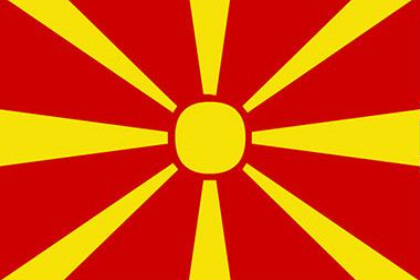
North Macedonia
Media structure
While television is the most popular news media in North Macedonia, public networks face fierce competition from commercial stations that dominate the market, the BBC reports. The media landscape includes TV stations operated by major business groups on the one hand, and small-circulation newspapers and news websites on the other.
North Macedonia’s state-owned public broadcaster MRT operates three national networks and a satellite network and competes against four private, national stations: Sitel TV, Kanal 5, Telma and Alsat-M. MRT also operates a radio station, matched by three private, national radio stations: Kanal 77, Antenna 5 and Metropolis Radio.
The North Macedonian press market is split between public, state-subsidized daily publications Nova Makedonija and Vecer, and commercial dailies Koha and Sloboden Pecat. North Macedonia has two news agencies, the private Makfax competing against Media Information Agency (MIA), which is state-run and provides English-language news.
enr-news agency
Media Information Agency (MIA) is a partner of the European Newsroom. MIA reaches 50 media outlets, of which three are daily newspapers. The agency also reaches 6 radio stations and 10 TV stations as well as 31 news platforms. MIA currently has one permanent correspondent accredited to the EU Commission.
Media usage
In North Macedonia, television is the most common media source used by citizens for gathering information about political and social events, while social networks are the second most common news sources. According to an Ipsos Strategic Marketing opinion poll, 52 percent of the population uses television as the main source of information. Furthermore, 75 percent of citizens questioned consume television on a daily basis.
Social networks, such as Facebook, Twitter, Instagram and YouTube, are used on a daily basis by 54 percent of respondents. However, 29 percent of North Macedonians questioned said they never used this source. Social networks are the main source of information for 25 percent of citizens.
29 percent of North Macedonian citizens said that personal contacts, such as family, friends or colleagues, were their most frequently used source of information, yet only 6 percent use them as their main source of information.
According to the results of the opinion poll, other traditional media lag far behind the figures for television and social networks, with roughly 7 percent of citizens saying they read print newspapers and magazines every day, and 16 percent reporting that they listen to the radio. As many as 66 percent said they never read print newspapers/magazines, and 58 percent never listened to the radio.
State of press freedom
North Macedonia’s media landscape is, politically speaking, deeply polarised, US-funded watchdog Freedom House states. Private media outlets are often subjected to pressure from political or business interests, which attempt to exert influence over their content. Nonetheless, many critical and independent outlets remain operational, mainly online.
At present, journalists still may be exposed to legal pressure and abusive prosecution (gag proceedings or SLAPPs) under the pretext of protecting state secrets and personal data. However, the courts tend to uphold freedom of the press and protect journalists. Amendments for a better protection of journalists are being prepared.
RSF Press Freedom Index: 38
Trust in the media
According to an Ipsos Strategic Marketing opinion poll, North Macedonians are evenly divided over the issue of trust in media reporting. In total, 49 percent of respondents said they had trust in the media, of which 41 percent mainly trusted media reports and only 9 percent trusted them completely. The other half of respondents expressed distrust in the media, of which 26 percent mainly didn’t trust media reports and 23 percent didn’t trust them at all.
Nearly 70 percent of North Macedonian citizens think that the media in their country spread political propaganda and disinformation. There is less agreement among citizens when it comes to hatred being spread by the media. While 57 percent of citizens agree that the media in Macedonia spread hatred, the opposite attitude is shared by 40 percent
The situation on social networks is perceived similarly. About two thirds think these media spread political propaganda and disinformation, while a smaller percentage think they spread hatred (66 percent and 63 percent, respectively). Younger people aged 18-44 agreed more than others that social networks were spreading political propaganda and disinformation. This might be explained by the more frequent use of social media by these age groups, but it also indicates their awareness of these phenomena.

Romania
Media structure
In Romania, TV is the most popular medium. According to the BBC, the country has strong commercial stations in Pro TV and Antena 1, as well as a competitive pay TV sector. TVR is the public broadcaster.
The country has more than 100 private radio stations. The public Radio Romania operates national, regional and local stations.
Due to a lack in credibility, the consumption of print media is declining massively, as the media project of the German Federal Agency for Civic Education eurotopics reports. They often only play a role due to their online presence.
Roughly 75 percent of the Romanian population use the internet.
enr-news agency
The Romanian Agenția Națională de Presă (Agerpres) is a partner agency of the European Newsroom. Its reach mirrors the Romanian media structure: Agerpres reaches 86 media outlets, of which six are daily and ten are weekly newspapers. The agency also reaches 25 radio stations and 20 TV stations as well as six news platforms.
Agerpres currently has no permanent correspondent in Brussels, but dispatches them for special occasions that are of interest for the country.
Media usage
A Eurobarometer from 2022 reveals that most Romanians get their news on the television. 80 percent said they had accessed news via TV over the previous seven days. Online news platforms came second at 53 percent. TV is the most frequently used source for news across all age groups. But TV usage increases with age: Among the 15-to-24-year-olds, 61 percent said they got their news via TV. This figure climbs to 89 percent for those older than 55.
37 percent of respondents had listened to news on the radio in the previous seven days. Another 29 percent had accessed news on social media platforms. A mere 15 percent had consumed news via print media in the seven days prior to the survey.
42 percent of those who had accessed news online said they had used the websites of news sources such as newspapers or TV channels. Another 42 percent replied that they had accessed news via social networks and 27 percent had reacted to notifications from news sources.
State of press freedom
Pertaining to this, RSF mentions political interference in appointing heads of public radio and television and that of public prosecutors in the work of journalists, including an increase in abusive lawsuits. Another problem is opaque media funding. With smaller media not being self-sufficient, they rely on subsidies – and the use of public money to buy positive media coverage is considered normal.
The interference of politics in media coverage dates back to the 1990s. Back then, Romanian entrepreneurs with excellent connections to politics or even parliamentary mandates founded TV channels and newspapers in order to increase their wealth and play an influential role in politics, the media project of the German Federal Agency for Civic Education eurotopics asserts. This becomes evident during electoral campaigns.
RSF also criticizes that editorial choices are often subordinated to the interests of owners, transforming the press into an instrument of propaganda. Eurotopics reports that TV stations have also used fake news in order to make politics themselves.
RSF Press Freedom Index: 53
Trust in the media
In a Eurobarometer from 2022, 43 percent of Romanians questioned had the greatest degree of trust in public TV and Radio stations, including their online presence. 33 percent trust private TV and radio outlets, including their online content. 23 percent put their trust in print media and their online content.
The degree of trust in people, groups or friends on social media amounts to 18 percent. Another 18 percent of respondents have trust in online platforms, such as blogs and podcasts and 13 percent trust video platforms. Trust in influencers on social media channels amounts to 6 percent.
Most Romanians (62 percent) are at least somewhat confident they would recognize fake news when encountering it. 4 percent are not at all confident and 4 percent don’t know whether they would recognize disinformation.
Almost half of Romanians (45 percent) believe to have been in contact with fake news often or very often in the past seven days. 35 percent of Romanians questioned believe that they have occasionally been exposed to fake news in the past seven days. Another 10 percent believe to have rarely been in contact with fake news and 3 percent believe this has not been the case at all.
Sources
https://rsf.org/en/country/romania (28.12.2022)
https://www.eurotopics.net/de/149422/rumaenien-die-presse-mischt-parteipolitisch-mit (28.12.2022)
https://www.bbc.com/news/world-europe-17776565 (28.12.2022)
https://europa.eu/eurobarometer/surveys/detail/2832 (28.12.2022)

Serbia
Media structure
Serbia has more than 2,500 media outlets. The most influential ones are the public broadcaster RTS and the independent television network N1, which is CNN International’s local broadcasting partner, non-governmental organization Reporters Without Borders (RSF) says. According to the organization, most media derive their revenues from advertising and opaque public subsidies.
enr-news agency
The Serbian news agency Telegrafska agencija Nove Jugoslavije (Tanjug) is a partner of the European Newsroom.
State of press freedom
According to RSF Serbia has some of the most advanced media laws, but due to political pressure on journalists, the actual state of the media continues to be fragile. Non-transparent ownership and financing of the media make journalists vulnerable to political and economic pressure.
US-funded watchdog Freedom House reports that media freedom is among other things also undermined by the threat of lawsuits and charges, editorial pressure from politicians and politically connected media owners, direct threats against journalists and high rates of self censorship.
In addition, RSF states, the judiciary deals with numerous strategic lawsuits against public participation – the so-called SLAPPs – and therefore has yet to prove its effectiveness in protecting freedom of the press.
RSF Press Freedom Index: 91
Trust in the media
According to an opinion poll by IPSOS in 2021, television is the primary source of information in Serbia. This is followed by online sources such as social media, used by 49 percent of respondents, and online news portals, news blogs and online news magazines, which are used by 41 percent. Print media are far behind – only 10 percent of respondents in the IPSOS survey read them daily.
The poll indicates that the audience in Serbia is polarized when it comes to media trust: 51 percent of respondents tend to trust the media, 48 percent do not. Television is the most trusted media followed by online investigative reporting outlets, other online media and radio. Sensationalist approaches to reporting in print media led to a decline in trust. On the other hand, trust in investigative print media increased.
Tabloidization, disinformation and biased reporting increasingly impair the quality of news content. It often favors the ruling coalition and demonizes political opponents and critical citizens.

Slovakia
Media structure
In Slovakia, media ownership is concentrated in the hands of a few business groups and individuals, US-funded watchdog Freedom House reports. Many private outlets are directly or indirectly owned by Slovak financial groups Penta and J&T. Television and online platforms are the main news sources in the country.
According to the BBC , Slovakia’s private TV stations Markiza and Joj are the market leaders. Radio and TV Slovakia (RTVS) is the public broadcaster an TA3 is another commercial TV station.
All major newspapers are owned by private entities, the BBC reports. Slovakia has four daily publications: Dennik N, Pravda, Sme and Novy Cas. The tabloid Novy Cas is Slovakia’s best-selling daily. Moreover, Plus 7 dni is the country’s leading weekly publication and The Slovak Spectator is the leading English-language weekly.
Slovakia’s public radio station is known as Slovak Radio. In addition, the country has commercial national radio stations including Radio Expres, Radio Jemne, Europa 2 and Fun Radio.
Slovakia has three news agencies. TASR is a public, national and independent agency that provides reporting in the public interest. SITA is a private news agency, while Azet is an online portal which operates the news site Aktuality.
enr-news agency
The Slovak news agency Tlačová agentúra Slovenskej republiky (TASR) is a partner of the European Newsroom. It reaches more than 350 media clients, including big publishing houses. In particular, TASR reaches 300 news platforms, 30 radio stations, 4 nationwide TV channels, 8 regional channels and some internet TV channels owned by publishing houses.
TASR currently has one permanent journalist in Brussels, who is accredited to the European Commission.
Media usage
A Eurobarometer from 2022 reveals that most Slovakians get their news on TV. 73 percent said they had accessed news via TV over the previous seven days. Radio came in second with 44 percent of respondents stating they had listened to news in the last seven days prior to the survey. TV is the most frequently used source for news across all age groups. 63 percent of those aged 15 named TV as their most frequent news source. This figure climbs to 83 percent for those over 55.
37 percent of respondents had got news via online news platforms in the previous seven days. Another 25 percent had accessed news on social media platforms. 13 percent had consumed news via print media in the seven days prior to the survey.
38 percent of those who had accessed news online had used the websites of news sources such as newspapers or TV channels. 36 percent said they had read news they got via notifications or alerts and another 20 percent said they had accessed news via social networks.
State of press freedom
In 2018, the assassination of investigative journalist Jan Kuciak sparked press freedom demonstrations in Slovakia, eurotopics , a media project of the German Federal Agency for Civic Education, reported. While the event continues to motivate the Slovak authorities in their attempts to improve press freedom, the non-governmental organization Reporters Without Borders (RSF) states that progress has been slow and journalists continue to work in a hostile environment.
According to RSF Slovak journalists are protected by the Freedom of Information Act and case law, which defends their rights. In 2020, the government promised to come up with new legislation to better protect journalists and their sources, to strengthen the editorial and financial independence of public broadcasting, to increase the transparency of media ownership and funding, and to reduce prison sentences for defamation.
Despite the Slovak society being largely conservative, the media are mainly liberal. Due to the resulting friction, journalists, especially women, are criticized and sometimes attacked online for covering issues such as gender or harassment, RSF states. Some of those demonstrating against government measures in the areas of the Covid-19 pandemic or corruption, have harassed and insulted journalists at protests or online. According to RSF, they have been encouraged by opposition leaders.
RSF Press Freedom Index: 17
Trust in the media
A Eurobarometer from 2022, 41 percent of Slovakians questioned trusted public TV and radio stations the most, including their online presences. Print media including their online content came second, trusted by 21 percent. 20 percent trust private TV and radio outlets, including their online appearances.
The degree of trust in people, groups or friends on social media also amounts to 20 percent. 16 percent trust in online platforms, such as blogs and podcasts, and 12 percent trust video platforms. Trust in influencers on social media channels amounts to 6 percent.
Half of the Slovakian population (50 percent) is somewhat confident they would recognize fake news when encountering it. 20 percent are very confident they would recognize it. 19 percent are not very and 6 percent are not at all confident. 5 percent don’t know whether they would recognize disinformation.
Roughly one quarter of Slovakians (26 percent) believe they have occasionally been exposed to fake news in the last seven days. 21 percent believe they were often and 15 percent believe they were very often in contact with fake news in the last seven days. 15 percent reckon they have rarely been exposed to fake news in the last seven days and 7 percent believe that this has not been the case at all. 17 percent said that they didn’t know.
Sources

Slovenia
Media structure
Public RTV Slovenia and private networks Pop TV and Kanal A are the main players in the TV sector, according to the BBC.
The Slovenian market also has plenty of publicly and privately owned radio stations. The main newspapers are privately owned (BBC). However, ownership of the media outlets is sometimes opaque, says US-funded watchdog Freedom House, and state-enterprises are still holding stakes in several media.
The market is described by the non-governmental organization Reporters Without Borders (RSF) as small but diverse, and also includes online papers such as the traditional Delo and Vecer, and newer platforms such as Necenzurirano.
87 percent of Slovenians have access to the internet.
enr-news agency
The Slovenian Slovenska Tiskovna Agencija STA is a partner of the European Newsroom. Overall, STA reaches 50 media outlets with its content. This includes 9 dailies and 5 weekly newspapers, 12 radio stations, 4 television stations and 20 news platforms.
Currently, two of the agency’s correspondents are accredited to European institutions.
Media usage
A Eurobarometer from 2022 reveals that most Slovenians get their news on television. 76 percent said they had accessed news via TV over the previous seven days. Online platforms came in second, with 44 percent of respondents stating that they had read news there in the last seven days prior to the survey. TV is the most frequently used source for news across all age groups. 65 percent of 15-year-olds named TV as their most frequent news source. This figure climbs to 84 percent for those over 55.
36 percent of respondents had listened to the news on the radio in the previous seven days. Another 36 percent had accessed news on social media platforms.18 percent had consumed news via print media in the seven days prior to the survey.
45 percent of those who had accessed news online said they had read the articles on social media. Another 37 percent stated they had used the websites of news sources such as newspapers or TV channels. 21 percent had used a news aggregator app or website.
State of press freedom
As RSF reports, the government arbitrarily suspended funding for the national news agency STA for several months. The reason for this contract dispute was, according to US-funded watchdog Freedom House, to compel the agency to submit to greater government control. Jansa also appointed political allies as leaders of the influential broadcaster RTV Slovenija and oversaw regulatory bodies, RSF states.
Currently, Slovenia ranks #50 out of 180 in RSF’s press freedom index which marks a climb of 4 places in comparison to the previous year. In 2022, the country had lost 18 places in the RSF-ranking and ranked #54. The country has a solid regulatory base, but defamation continues to be a legal offense, the organization Freedom House confirms. RSF reports that media outlets have been coerced to reveal their sources and journalists are also subject to strategic lawsuits against public participation, so-called SLAPPs.
While female journalists and those investigating corruption have been threatened on and offline, there have also been signs of solidarity in a crowdfunding for the news agency STA, RSF says.
RSF Press Freedom Index: 50
Trust in the media
In a Eurobarometer from 2022, 43 percent of Slovenians questioned trusted public TV and radio stations the most, including their online presences. Print media including their online content came in second, trusted by 25 percent. 20 percent trust private TV and radio outlets, including their online appearances.
The degree of trust in people, groups or friends on social media amounts to 21 percent.15 percent trust in online platforms, such as blogs and podcasts, and 11 percent trust video platforms. Trust in influencers on social media channels amounts to 6 percent.
Nearly half of the Slovenian population (46 percent) is somewhat confident they would recognize fake news when encountering it. 12 percent are very confident they would recognize it. 33 percent are not very and 5 percent are not at all confident. 4 percent don’t know whether they would recognize disinformation.
Just under one third of Slovenians (29 percent) believe they have occasionally been exposed to fake news in the last seven days. 24 percent believe they have often and 13 percent believe they have very often been in contact with fake news in the last seven days. 17 percent reckon they have rarely been exposed to fake news in the last seven days and 5 percent believe that this has not been the case at all.12 percent of respondents said that they didn’t know.
Sources
https://rsf.org/en/country/slovenia (06.01.2022)
https://www.bbc.com/news/world-europe-17847544 (06.01.2022)
https://freedomhouse.org/country/slovenia/freedom-world/2022 (06.01.2022)
https://www.internetworldstats.com/stats4.htm#europe (06.01.2022)

Spain
Media structure
Spain’s media landscape had already shrunk after the economic crisis in 2008 and received another blow during the Covid-19 pandemic, as eurotopics, a media project of the German Federal Agency for Civic Education, states.
The most important source of news in Spain is TV, the BBC reports. The sector is highly concentrated and this process is still ongoing, eurotopics states. The two TV stations Cuatro and Telecinco merged in 2010, and in 2012 La Sexta and Antena 3 followed. Nowadays, 75 percent of broadcasting is in the hands of two privately owned media groups, Altesmedia and Mediaset, as well as public TV and radio broadcaster RTVE (RSF). Regional television channels are operated by local governments, and Movistar + is the biggest pay TV provider (BBC).
In the eyes of the BBC, the Spanish print media sector is more diversified. Well-known Spanish publishing houses are Prisa (El País, Cinco Días), Unidad Editorial (El Mundo, Expansión, Marca), Vocento (ABC, El Correo), Godó (La Vanguardia) und Prensa Ibérica (El Periódico de Catalunya).
93 percent of the Spanish population have access to the internet.
enr-news agency
The Spanish agencies Agencia EFE (EFE) and Agencia Europa Press (Europa Press) are partners of the European Newsroom.
Media usage
A Eurobarometer from 2022 reveals that most Spaniards get their news on TV. 76 percent said they had accessed news via TV over the previous seven days. Radio came in second with 36 percent of respondents stating that they had listened to news in the last seven days prior to the survey. TV is the most frequently used source for news across all age groups. 66 percent of 15-year-olds named TV as their most frequent news source. This figure climbs to 85 percent for those over 55.
35 percent had got news via online news platforms in the previous seven days. Another 31 percent had accessed news on social media platforms. 20 percent had consumed news via print media in the seven days prior to the survey.
44 percent of those who had accessed news online had used the websites of news sources such as newspapers or TV channels. Another 29 percent said they had accessed news via social networks and 17 percent had used a news aggregator app or website.
State of press freedom
There are allegations by the media against the current Prime Minister Pedro Sanchez over a lack of transparency in handling information regarding the Covid-pandemic, RSF reports. They also say that the far-right vilifies and harasses journalists who report critically.
According to the US-funded watchdog Freedom House, a so-called “gag law” is in place in Spain, which provides for heavy penalties for offenses such as spreading pictures that could endanger members of the police force. Even though the most controversial parts are currently under review, the police make use of the granted powers, RSF reports. According to them, the court systems sometimes trust the police more than journalists. Journalists can also be subject to SLAPPs and their confidentiality can be challenged in courts. Spanish journalists do not face pressure from society.
Spanish reporters were relatively safe physically, since the protests over Covid-19 mitigation measures were quite peaceful. In addition, the violent protests over the potential secession of Catalonia have calmed down. Reporters are, however, subject to harassment in social media, RSF reports.
The organization Freedom House grants that Spain has a free press, but has fears for the independence of media, due to the consolidation of private ownership.
RSF Press Freedom Index: 36
Trust in the media
45 percent of Spaniards questioned trusted public TV and radio stations the most, including their online presences. Print media including their online content come in second and are trusted by 44 percent. 36 percent trust private TV and radio outlets, including their online appearances.
The degree of trust in people, groups or friends on social media amounts to 13 percent. 11 percent trust in online platforms, such as blogs and podcasts, and 7 percent trust video platforms. Trust in influencers on social media channels amounts to 5 percent.
Two thirds of the Spanish population (66 percent) are at least somewhat confident they would recognize fake news when encountering it. 26 percent are not very and 4 percent are not at all confident. 5 percent don’t know whether they would recognize disinformation.
Over a third of Spaniards (39 percent) believe they have occasionally been exposed to fake news in the last seven days. 15 percent believe they have been very often in contact with fake news in the last seven days and 25 percent believe this has often been the case. 12 percent believe they have rarely been exposed to fake news in the last seven days and 3 percent believe they have not encountered them at all. Another 7 percent state that they don’t know.
Sources
https://rsf.org/en/country/spain (05.01.2023)
https://www.eurotopics.net/de/149427/spanien-im-alarmzustand (05.01.2023)
https://www.bbc.com/news/world-europe-17944960 (05.01.2023)
https://internetworldstats.com/stats4.htm#europe (05.01.2023)
https://freedomhouse.org/country/spain/freedom-world/2022 (05.01.2023)
https://internetworldstats.com/stats4.htm#europe (05.01.2023)
https://europa.eu/eurobarometer/surveys/detail/2832 (09.01.2023)

